Humanity is facing the disconnection between biological reproduction and the body, facilitated by the emerging technology of the Artificial Womb. Envisioned in bleak science fiction scenarios many times in the past, this technology is about to become a reality in our present. But how will it affect our culture - and how should that new culture be designed? If birds lay eggs, why shouldn’t humans do that, too?
What is ectogenesis?
The scientific accurate term for the enabling technology behind the artificial womb is Ectogenesis (from the Greek ecto, outer, and genesis, birth), a term coined by British scientist J.B.S. Haldane in 1924. Accordingly, ectogenesis refers to "the growth of an organism in an artificial environment outside the body in which it would normally be found, such as the growth of an embryo or fetus outside the mother's body, or the growth of bacteria outside the body of a host". An artificial womb consists of a few basic facilities: an amniotic fluid in which the fetus lives, a supply of oxygen and nutrition, waste disposal and an interface to control all of these. The first patent for an artificial womb including all these elements was filed by Emanuel M. Greenberg in 1955 under patent number US2723660 A. Conceptually, Ectogenesis could be classified as an assisted reproductive technology, similar to In Vitro Fertilization (IVF).
History
The idea of ectogenesis has been envisioned many times throughout history. In the Mahabharata, one of the two major Sanskrit epics of ancient India, Queen Gandhari of Gandhara was unable to deliver a baby though several months elapsed. Meanwhile, her brother-in-law's wife Kunthi delivered five babies who were to become Pandavas afterwards. Gandhari got jealous of Kunthi and hysterically hit against her own belly resulting in a miscarriage. The embryo disintegrated into 100 pieces and were then placed in jars of ghee (clarified butter) by her father-in-law Saint Veda Vyasa and grown to term as 100 Kaurava princes.
A less fairytale-like vision of the artificial womb is found in the dystopian science fiction novel Brave New World (Aldous Huxley, 1932). In this story, published during the heydays of eugenics, human fetuses are conditioned through a carefully designed regime of chemical, thermal and other environmental stimuli in order to optimize the fetus’ later role in society, such as exposure to hormones and toxins, or exposure to intense heat or cold, as one's future career would dictate. A more recent example is the movie The Matrix (Wachowski’s, 1999). In this film, human bodies are kept in an amniotic fluid as living batteries. Not very uplifting visions for humans.
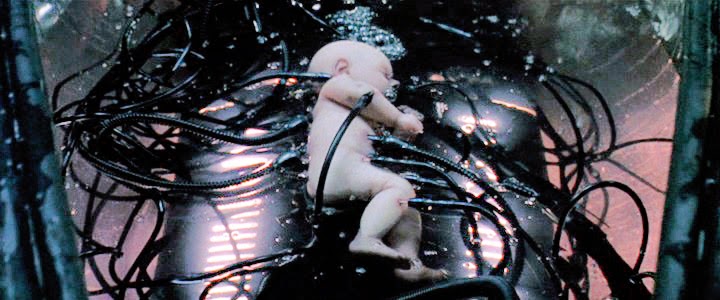 The Matrix (Wachowski’s, 1999).
The Matrix (Wachowski’s, 1999).
If we look into the realities of assisted reproductive technologies, we see a somewhat different picture. In 1860, the first baby incubator that qualifies under modern standards was built by Odile Martin, director of the Paris zoo. Some 40 years later, in 1901, baby incubators are exposed at Coney Island, New York City. The fact that the technology was exhibited along ‘freaks’ signifies that it still is perceived as ‘artificial’ and far from widely accepted in society. How different it is today, as baby incubators are considered a life saving technology for early-borns. In some respects, the artificial womb could be seen as the successor of the incubator, albeit filled with amniotic fluid and radical implications for society.
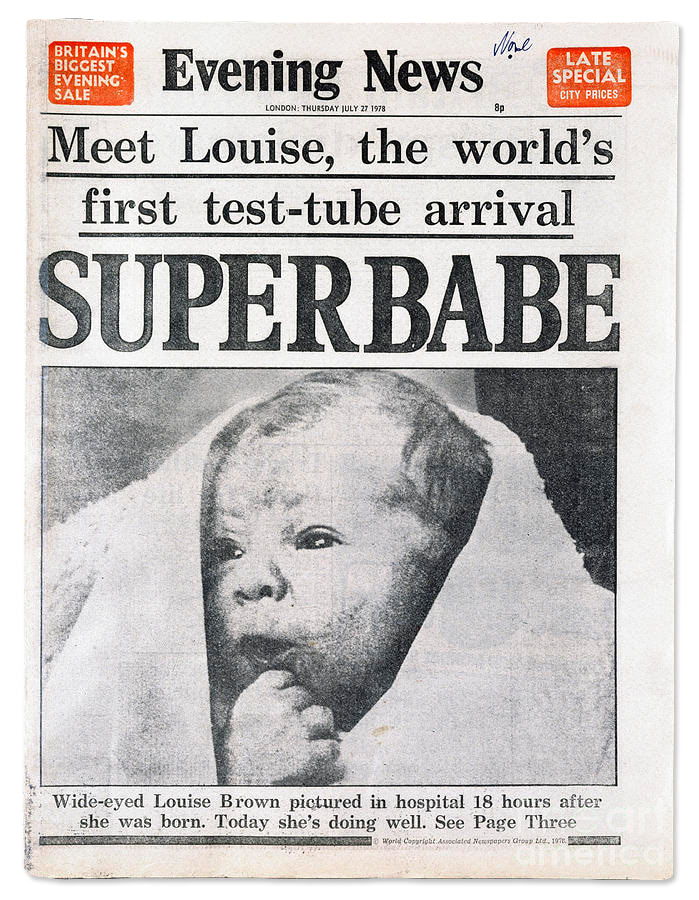 1978, July 5th: Louise Brown, the first human conceived with IVF, was born.
1978, July 5th: Louise Brown, the first human conceived with IVF, was born.
On July 5th 1978, the world welcomed Louise Brown, the first human baby ever conceived through In Vitro Fertilization (IVF). After her, over five million ‘test tube babies’ were put on earth using similar technologies. On July 5th 2018, Louise Brown will celebrate her 40th birthday. What if we would use this moment to reflect on the potential of assisted reproductive technologies, and look ahead to the forthcoming 40 years? New advances in neonatal science give us all the reason to do so.
An important research in the field of ectogenesis has been undertaken at Juntendo University Tokyo by prof. Yoshinori Kuwabara in 1996, who kept a goat embryo in amniotic fluid for the duration of days. But the most recent milestone has been achieved by Alan Flake, foetal surgeon at the Children’s Hospital of Philadelphia (CHOP). With his team, Flake designed an artificial womb that could critically support premature babies and successfully demonstrated the system with lambs for the first time, an advancement that could transform the lives of the most fragile newborns. “If we can support growth and organ maturation for only a few weeks, we can dramatically improve outcomes for extremely premature babies” he says. So at this point, the artificial womb is merely a device to prolong gestation outside of the womb, like a highly advanced incubator. Flake doesn’t foresee that the entire gestation will ever take place externally. “The reality is that at the present time there’s no technology on the horizon […] There’s nothing but the mother that’s able to support that [initial] period of time”. He adds: “I don’t want this to be visualised as humans hanging on the walls in bags. This is not how this device will work or look”.
 Lamb fetus after respectively four and twenty-eight days of support in an artificial womb created by Alan Flake at the Children’s Hospital of Philadelphia (CHOP).
Lamb fetus after respectively four and twenty-eight days of support in an artificial womb created by Alan Flake at the Children’s Hospital of Philadelphia (CHOP).
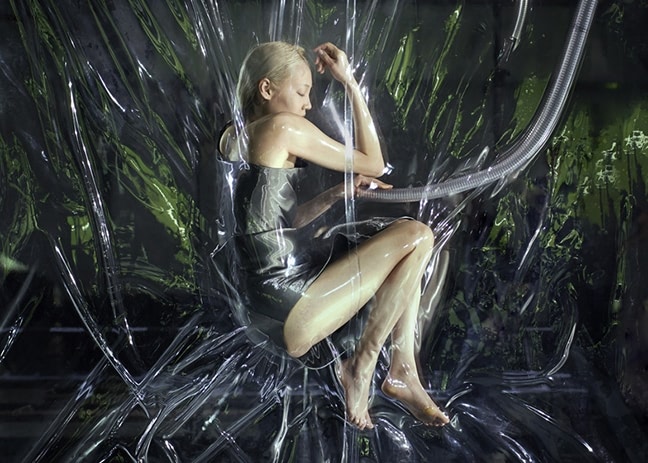 "Biopiracy" installation by Iris van Herpen and Lawrence Malstaf (2014).
"Biopiracy" installation by Iris van Herpen and Lawrence Malstaf (2014).
The question then becomes: how will it be visualized? And who will be in the lead here? This is a design question, but also a social and even political question. As with other advances in (bio)technology, chances are high at some point this technology will be applied in a different context than originally foreseen. We have seen this with In Vitro Meat, which is basically an iteration of advances in medical science in the 90’s and only now gains momentum within the food industry.
Societal impact
In the 2nd half of the 20th century, technological contraceptives such as The Pill disconnected intercourse (a.k.a. sex) from biological reproduction (a.k.a. pregnancy), which sparked a sexual revolution and, in its slipstream, a massive change in the perception of the role of women in society - which became known as 'second wave feminism'. Ectogenesis holds the potential to disconnect biological reproduction from the (female) body; it only seems evident that this will have a huge impact on society. On the one hand, it is difficult not to see a bleak side to this: another precious (for some even holy) domain of life under the control of technology, instantly marketable and leading to further commodification of bodies and ultimately, human breeding factories in totalitarian regimes.
However, there might also be a liberating, emancipatory side to this technology; the artificial womb can easily be imagined for medical reasons, to help reducing infant mortality rates. But simultaneously it might become the ultimate feminist dream that once and for all creates a level playing field for men and women, as well as gay, queer or transgender couples. We can only wait for the day three people in a polyamorous relationship will have their own baby - AND take equal responsibility for her/his upbringing.
Challenge
At this point, there are many technological challenges, like how to dispose the waste? But beyond this, there are quite a few prominent societal questions. Beyond feasibility, there is the question of desirability; do we want this in our society? Which problem the artificial womb actually solves, and isn’t this problem better or at least easily solved by other means (probably not involving technology)? What dreams will it realize and whose dreams will they be?
Then there is an aesthetic question: if the artificial womb will ever make it any further than the science lab, how should it be envisioned and who should be involved in its design? Even if this technology will never happen, envisioning it alone will teach us so much about our dreads and desires. It will provide us a mirror to ourself, expose nagging myths around pregnancy and childbirth and open up a much needed discussion about the future of human reproduction, and technology role in it.
Let’s be fair. Unlike IVF, it does not seem likely at this point that we will have five million babies ‘born’ out of artificial wombs in 2057. Still, it seems an idea worth exploring before the engineers do so. And yes, it is true, the artificial womb sounds somewhat uncanny. An open societal debate seems very difficult around this sensitive topic, and the bleak images from science fiction books and Hollywood movies do not necessarily help imagining a bright future for the artificial womb. But this debate is much-needed and we have to start somewhere. So what are new metaphors that help us envision and design the artificial womb and the new cultures around it? How could this technology move beyond mere utilitarian medical applications and help us redefine what it means to be human? Where should we start? Should we look at existing rituals around birth, sex and death? How about you are born from an urn and return to that same object after you die, wouldn’t that be beautiful? If kangaroos carry their fetus around, or if birds lay eggs, why can’t humans do that too?
Future Anthropology
After exploring future food cultures with the In Vitro Meat Cookbook, Bistro in Vitro and the Meat the Future exhibition (2014-present), Next Nature Network further researches the merging of the born and the made by exploring both dreams and nightmares around the concept of the artificial womb. The project, led by designer Hendrik-Jan Grievink, will be shaped as an ‘anthropology of the future’, and will include exploration of conceptual consequences as well as the material culture and infrastructure that surround this technology. The goal of the project is not so much to predict the future, but to develop thought-provoking scenarios to facilitate a much-needed discussion about gender, biological reproduction, relationships and love in the 21st century.
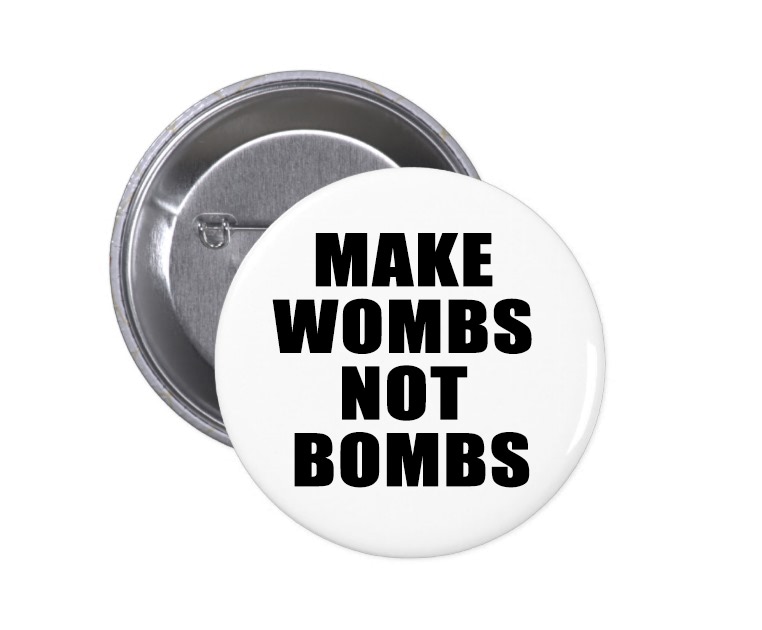 Button proposal by Hendrik-Jan Grievink (Next Nature Network).
Button proposal by Hendrik-Jan Grievink (Next Nature Network).
REFERENCES
Patent US2723660 - Artificial Uterus, Google Patents. Google, n.d. Web. 30 Apr. 2017.
Devlin, Hannah. Artificial Womb for Premature Babies Successful in Animal Trials, The Guardian. Guardian News and Media, 25 Apr. 2017. Web. 26 Apr. 2017.
Haraway, Donna Jeanne. A Cyborg Manifesto: Science, Technology, and Socialist-feminism in the Late Twentieth Century. N.p.: n.p., 2009. Print.
Haraway, Donna J. Staying with the Trouble: Making Kin in the Chthulucene. N.p.: Duke UP, 2016. Print.
This article is part of the Artificial Womb research project by NNN. The goal of this project is to develop thought-provoking scenarios that facilitate a much-needed discussion about the way technology radically alters our attitude towards reproduction, gender, relationships and love in the 21st century. We highly value your feedback or input, contributions can be sent to womb@nextnature.net.
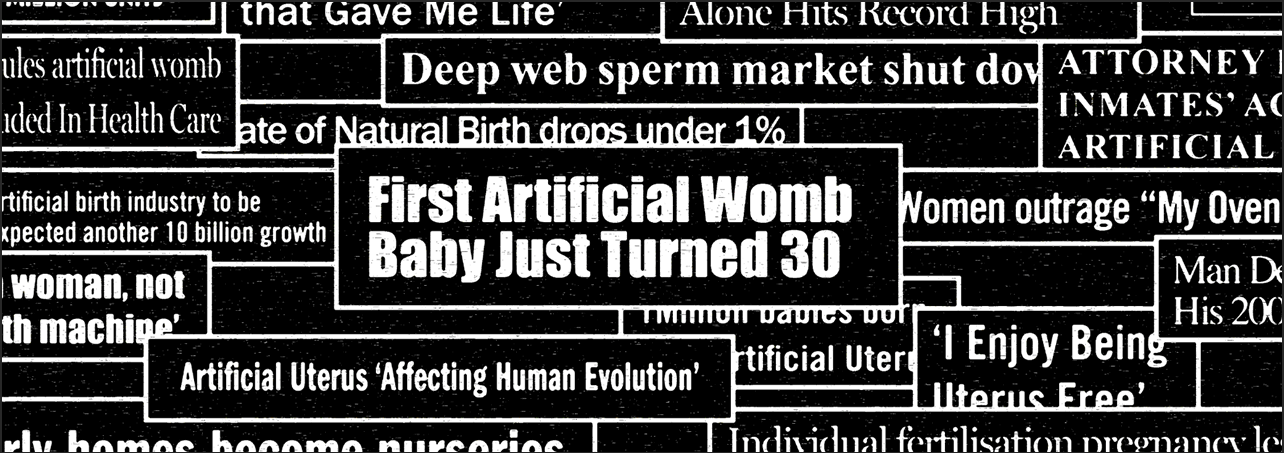
Share your thoughts and join the technology debate!
Be the first to comment